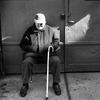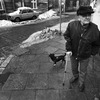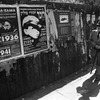Poster Pageant at the National Museum
Posters from Cracow's Academy of Fine Arts (1899-2003): The National Museum, March 12- April 25th.
When at an exhibition, it's always a good sign when you feel that you could gladly take half of the exhibits home. However, you would certainly need a rather big house to accommodate all the pictures that are on display at the National Museum's current show. Spanning a hundred years in the history of the Polish poster, the exhibition presents the largest single retrospective of Cracovian posters. Polish poster art has won deserved international acclaim, and for those who are already familiar with the galaxy of the Polish poster, the show will be something of a glorious treat, yet for the uninitiated it offers a host of unexpected surprises.
The exhibition catalogue begins in 1899 and runs all the way up to 2003. During the twentieth century, the Polish world was turned upside down on several occasions - two World Wars, a Soviet totalitarian regime and then finally a return to Western style capitalism in 1989. However, there is a spirit of otherworldliness and magic that keeps re-emerging in this exhibition - qualities that are inherently Polish - providing a comforting sense of continuity amidst the topsy-turviness of Polish life.
The show begins at the height of Polish Art Nouveau - one of the country's richest artistic periods. Here one finds dreamy works by greats such as Wyspianski, Mehoffer and the marvellous caricaturist, Kazimierz Sichulski. These posters (all linked to artists from Cracow's Academy of Fine Arts) were used to advertise art exhibitions, concerts and balls, and the sense of sweet music wafting across some smoky ballroom is very much palpable. By this time, the poster had already been hailed as an art form in its own right, as had also been the case in the Paris of Henri Toulouse-Lautrec. The classic 'Pijana Brama' (The Drunken Gate), an amusing throwback to the louche 'Green Balloon' Cabaret of the Jama Michalika cafe, can be found here. This depicts one of Cracow's ancient landmarks , St.Florian's Gate, bubbling away inside a glass of absinthe - the gate was the first sight to greet artists as they stumbled out of the cafe in the early hours.
The exhibition leads on through the years of Poland's inter-war independence. One of the standout images here is a poster from 1934 advertising an exploration of the remote Hucul lands (the highlands of Poland's South East). A stout highlander, rendered like a Pied Piper type magician, stands atop a mountain, blowing on a trumpet of fantastical dimensions. In the background an enchanted landscape unfolds, punctuated by a domed wooden church that is typical of the region.
One of the most poignant images in the exhibition belongs to the year 1945. Here a black and white image of the Madonna holding her murdered son is presented under the title Polonia. Rendered like a folk woodcut from the Highlands, the child-like sweetness provides the faintest air of consolation to the stark message.
During the nineteenth century era of Romanticism and partition, Poland had often been presented as the Christ of nations. In 1945 it seemed that this syndrome had returned with a greater force than ever before - over a fifth of the population had perished during the war, and the country was literally in ruins.
The ensuing period of Stalinism (1948-56), presented a major dilemma to artists who remained in Poland. Some launched into the brave-new-world spirit with gusto, whilst others went into exile. However, many of the best artists who worked within the system managed to evade some of the more heavy-handed extremes of socialist realism. Tadeusz Jodlowski's low-key yet striking ' Ten Years of Building the People's Republic' (1955), is a good example of this. A small builder's trowel, set amidst a smooth red background, is entwined with the ribbon of a Polish governmental cross of honour. It is a distinctly less bombastic, and consequently more powerful image than the host of conventional Soviet propaganda that was so prolific at that time. On a different tack, Tadeusz Niemirski's 'The Woman and the Tractor' (1948) seems almost groovy with it's psychedelic, swirling colours.
Grooviness was something that moved up a gear in the wake of the post-Stalinist thaw. This was a time when jazz and film began to flourish (the very act of playing jazz constituted a certain rebellion against the stifling character of officially-sanctioned culture). The lively and increasingly surreal posters that accompanied the trend gave voice to this spirit, and the ensuing decades were to become the golden age of the Polish poster, upon which much of their international fame rests.
A 'velvet prison' syndrome, in which artists were funded and given freedom of expression in certain spheres, whilst being forbidden to comment on others, was to hold sway until 1989. However, the art of the poster also enjoyed a brilliant spell in tandem with the protest movement of Solidarity. The Solidarity slogan itself is one of the most memorable images of the era, both in and outside of Poland.
Thankfully, the clutch of post-1989 posters shows that artists imaginations remain undiminished, and this section provides a promising conclusion to the show. New developments in technology seem only to have added more strings to the artist's bow - there is life in the old tradition yet. The National Museum have created a fine exhibition here that's well worth exploring. Long may the Polish poster continue to flourish.

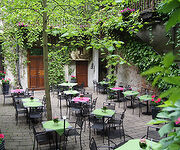 Kawaleria Szarza Smaku
Kawaleria Szarza Smaku
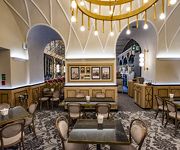 Europejska
Europejska
 Krakow Pinball Museum
Krakow Pinball Museum



